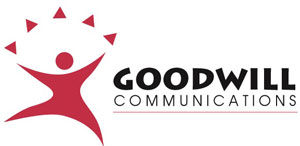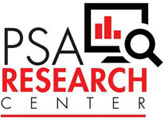
Coalition Building/Publicity & PSAs Converge to Fight Distracted Driving
Note:
Earned media refers to publicity gained through promotional efforts other than paid advertising and is generated on the editorial side of the media house. Public service advertising (PSAs) might be defined as a hybrid form of mass communications wherein a non-profit organization qualifies for free media time and space working through the media outlet’s public service director or program director.
Typically, PSA campaigns and publicity efforts are distinctly different tactics, handled by different staff people and never the two converge. However, a campaign we handled to combat distracted driving on behalf of the American Academy of Orthopaedic Surgeons (AAOS) demonstrates how these two forms of mass communication can work together to generate a synergistic impact.
Scope of the Problem
Just when deaths and crashes from drinking and driving have fallen to an all-time low, it is estimated that up to 500,000 people are injured in car crashes caused by distracted drivers. Some brief facts on the problem:
- The National Safety Council (NCS) estimates that nearly 28 percent of crashes – about 1.6 million a year – can be attributed to cell phone talking and texting while driving.
- A Nationwide Insurance public opinion poll showed 81 percent of the public admitted to talking on a cell phone while driving.

- The National Highway Traffic Safety Administration (NHTSA) estimates that 11 percent of drivers at any point during the day are talking on cell phones while driving. Those people are four times more likely to be involved in a crash.
- A Virginia Tech/NHTSA study reported that 80 percent of all crashes and 65 percent of near crashes involve some type of distraction.
What makes the above trends even more serious is that cell phones are just one of many forms of distractions in today’s high tech vehicles, which are equipped with GPS, video screens, CD players and other activities that can distract the driver. Given that many drivers are multi-tasking, trying to maintain order in their vehicles with noisy children, perhaps eating on the run, and you have a perfect storm for road disaster.
The Decide to Drive Campaign
The rationale for involvement by the AAOS is that their member physicians are the ones who put broken bodies back together when a person is involved in a terrible auto crash. The campaign AAOS launched to address the problem had many facets including:

PSAs
PSAs were distributed to 8,000 broadcast/cable TV, radio, print and out-of-home media, including over 200 national TV networks. The TV PSAs were all tagged with the name of the state societies as shown here, which made them more appealing to local stations.

The TV PSA campaign called Froggy, provides a dramatic message in slow motion demonstrating the consequences when a young mother takes her eyes off the road for a split-second. It was created by August Lang & Husak, a Bethesda, MD-based advertising agency, and can be viewed at: https://www.distracteddriving.com
Tying in With a Special Event
Every year the month of April is Safe Driving Month which provided us with a perfect opportunity to tie into this special event. To accompany TV PSAs sent to broadcasters, we created a special newsletter with background information on the issue and the campaign we launched to impact the problem.

Radio PSAs
Radio PSAs in various spot lengths were sent to 5,000 stations reaching teen and adult audiences using an attractive four-color mailer with a CD enclosed. Radio is a particularly strong medium for this message because it reaches many drivers via their car radios to remind them to keep their eyes on the road.

Print PSAs
Normally print PSAs generate the least exposure for a national campaign, but the Wall Street Journal, one of the largest newspapers in the country, was using a lot of PSAs for another client. We had our outreach person contact them to see if we could place distracted driving print PSAs in the Journal. As a result, they ran 44 print ads of various sizes for a total circulation of 42.3 million, generating $1.64 million in value.
Educational Liaison
A school curriculum on distracted driving was distributed to 10,000 high school teachers to promote classroom discussions.
The teaching kit integrates math, language arts, and social studies in lessons designed to

educate students about the dangers of distracted driving and to enlist their support in changing their parents’ distracted driving behavior.
It includes reproducible student activities, a teachers’ guide to enrich learning and a colorful wall poster portrayinga variety of distracted driving behaviors.
Coalition-Building
Part of the success of the Distracted Driving campaign was due to the collaboration with other organizations which wanted to do something positive to impact the problem.

In a partnership with the Auto Alliance and the Orthopaedic Trauma Association, an interactive website was created at: https://www.decidetodrive.org/ with various features to address the issue of distracted driving. One of them allows observers of distracted driving to report unsafe incidents which are posted to the website.
Publicity
To generate earned media, an interactive press release was distributed to 30,000 journalists and online media outlets via PR Web. The TV PSA was embedded in the press release so that journalists could preview the PSA and it included a link to the Decide to Drive Website. To see the release go to:
http://www.prweb.com

To generate more publicity, AAOS and its partner organizations staged a press conference at the National Press Club in Washington, DC which had several news-making features:
- The results of a Harris poll on distracted driving was released to the media.
- David Strickland, the Administrator of the National Highway Traffic Safety Administration, spoke about what his agency is doing to reduce the incidence of distracted driving.
- An Orthopaedic surgeon discussed how he saved the life of a young driver who was texting and driving and was nearly killed in a terrible car crash.

- Former heavyweight champion boxer Joe Frazier spoke about how he was hit by a driver who was texting on his phone.
Outdoor is King
- Reinforcing the press conference and to promote the overall campaign, Goodwill Communications arranged complete outdoor poster coverage of the Washington, D.C. Metro area via:
- Airport diorama posters at both Regan/National and Dulles International airports. At Regan/National we had posters throughout the baggage pick-up area, TV PSAs on the video monitors located there, and a print ad in the Washington Flyer magazine distributed at the airport.
- Complete coverage (4 posters) in the rental car lounge at the airport.
- Outdoor posters throughout the Washington Metro Area Transit Authority, which included interior/exterior bus posters, dioramas on subway platforms and walls.
- Posters surrounding the National Press Building, and in all the major shopping malls in the Washington Metro Area.

Anyone passing through Times Square during the months of February, March and April prior to the campaign launch, was sure to notice the jumbo electronic messages which flashed 18 times an hour warning the bustling throngs below about the dangers of distracted driving.
The campaign generated 70,260 airplays and over $17 million in verified ad support from the PSA campaign alone. The publicity and social media efforts generated tens of thousands of additional value, and hopefully everyone who saw these important messages will focus on the road ahead when driving in the future.


